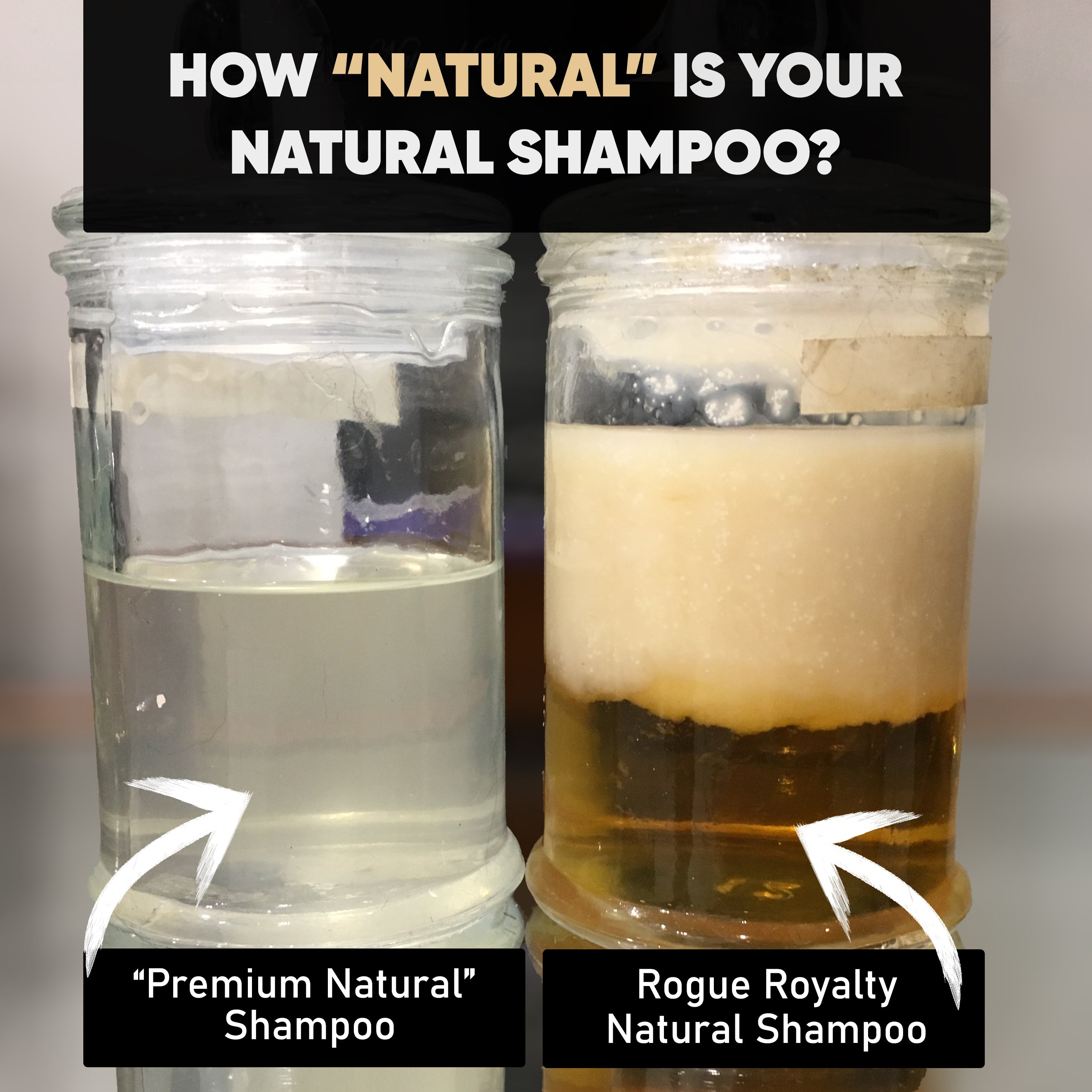Many people buy natural products trusting the clever packaging and branding but let's go a little more than skin deep. We have a photo of two natural products that were poured and left to settle for weeks. See the results for yourself. When we say coconut oil - we mean coconut oil!
So here's some key points to help you choose REAL natural products.
Coco Betaine.
Coco betaine is a type of chemical surfactant derived from coconut oil. It is commonly used as a foaming agent and emulsifier in personal care and cleaning products, such as shampoos, body washes, and laundry detergents. It is known for its mildness and biodegradability, making it a popular choice for use in eco-friendly and natural products.
Coco betaine is typically made by the reaction of coconut oil with an alkali, such as sodium hydroxide. This process, known as saponification, converts the fatty acids in the coconut oil into a mixture of soap and glycerol. The resulting mixture is then neutralized with an acid, such as hydrochloric acid, which converts the soap into a mixture of fatty acid salts, including coco betaine.
The process can be summarized as follows:
- Coconut oil is heated with an alkali (such as sodium hydroxide) to produce a mixture of soap and glycerol (glycerin)
- The mixture is then neutralized with an acid (such as hydrochloric acid)
- The resulting mixture is then distilled to separate out the fatty acid salts, including coco betaine.
There are also other methods to make coco betaine, like using enzymatic processes.
Fillers
One of the main fillers used in shampoos is water. Water is a cheap and readily available ingredient that helps to create the desired consistency and viscosity for shampoos. It also acts as a solvent for other ingredients in the shampoo, helping to distribute them evenly throughout the product. Other fillers that can be used in shampoos include glycerin, propylene glycol, and sodium chloride (table salt). These ingredients can help to thicken the shampoo, add moisturizing properties, or adjust the pH level.
Synthetic Fragrances
Synthetic fragrances are made by combining a variety of chemical compounds. These compounds can include synthetic versions of natural aroma compounds, as well as completely synthetic compounds that do not occur naturally.
Many synthetic fragrances are a blend of several chemical compounds, and the exact ingredients used can vary depending on the manufacturer and the specific fragrance. Some of these chemicals may cause irritation or allergic reactions in some individuals, and some may also be harmful to the environment which is ironically not what you signed up for when purchasing a "natural" product.
Some of the chemicals that are commonly used to make synthetic fragrances include:
-Aldehydes: These are organic compounds that are known for their fruity, floral, and spicy scents. They can be used to mimic the scents of fruits, flowers, and spices, such as citrus, rose, and cinnamon.
-Esters: These are compounds that are known for their fruity and floral scents. They can be used to mimic the scents of fruits, such as apples and bananas, as well as flowers such as jasmine and lavender. -Terpenes: These are compounds that are known for their woody and earthy scents. They can be used to mimic the scents of trees and plants, such as pine and cedar. -Phenols: These are compounds that are known for their spicy and medicinal scents. They can be used to mimic the scents of spices such as clove, and can also be used to create antiseptic scents. -Ketones: These are compounds that are known for their floral and fruity scents. They can be used to mimic the scents of flowers and fruits, such as rose and strawberry.
It's worth noting that many synthetic fragrances are a blend of several chemical compounds, and the exact ingredients used can vary depending on the manufacturer and the specific fragrance. Some of these chemicals may cause irritation or allergic reactions in some individuals, and some may also be harmful to the environment.






